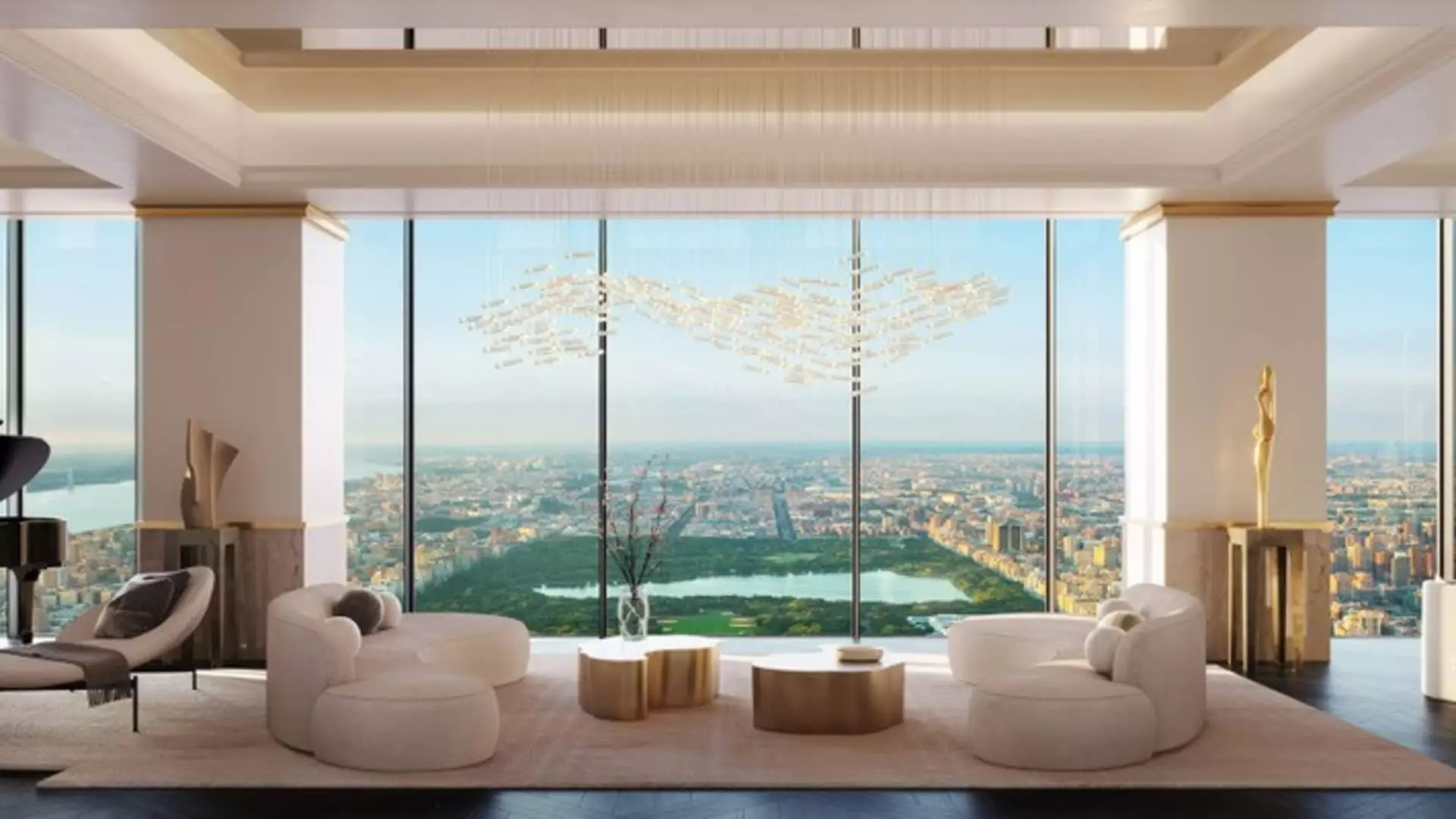As global financial markets churn, the juxtaposition between turbulence on Wall Street and the soaring prices in Manhattan’s real estate market feels almost surreal. Recently, a penthouse on the upper echelons of Steinway Tower was listed for a staggering $110 million. Fifty years ago, such wealth was incomprehensible for most Americans, a mere residue of fairy tales reserved for the richest of the rich. Now, sobering figures like a 1,679-point drop in the Dow Jones Industrial Average challenge our notions of asset value and stability. But the question lingers: can we bubble-wrap ten-figure properties, insulating them from volatile financial realities, or are we merely observing an elite charade of false resilience?
Sotheby’s International Realty broker Nikki Field is optimistic. She insists that her affluent clientele remains unfazed by market upheaval, focused exclusively on curating luxury portfolios irrespective of the tempest raging in the broader economy. For the ultra-wealthy, economic uncertainty appears less threatening when viewed through a binocular lens of long-term value creation in “ultra-prime” residential real estate. These individuals have the capital to prioritize enduring quality over transient trends; however, this raises a critical question—are they out of touch, or are they adaptively shrewd?
The Quadplex Concept: Architectural Alchemy or Marketing Ploy?
Nestled at the pinnacle of the Steinway Tower, the combined penthouses—sporting a dizzying 11,480 square feet and equipped with breathtaking vistas of Central Park—are marketed as a “quadplex” waiting for imaginative transformation. Yet, while Field refers to their architectural potential, one can’t help but ponder whether this strategy risks being a branding façade. Given that neither unit has been previously marketed, is this collective listing merely a clever marketing tactic to entice curiosity and generate hype?
Indeed, the allure of these ultra-lux properties is potent, drawing in inquiries from “highly qualified individuals.” However, the contrasting dynamics of the broader market tell a different story—one filled with hesitation and caution. As Jonathan Miller of Miller Samuel aptly points out, $100 million homes were once seen as outlandish publicity stunts rather than realistic sales. We’re left speculating whether the recent uptick in sales over $100 million reflects genuine demand or fascination with luxury marketing.
A Widening Chasm: Luxury Market Realities
While the ultra-rich seem untouched by financial tremors, other segments of the luxury market are less buoyant. Reports indicate that hesitation is creeping into the minds of buyers who might reevaluate their financial commitments amidst ongoing trade policy uncertainties. The most troubling aspect of this reticence is its correlation with the overall sentiment of the economy. High-net-worth individuals remain globally engaged, but their priorities are shifting; some see this as a perfect opportunity to migrate assets from volatile stock markets into real estate.
For many luxury brokers, lowered expectations are becoming the norm. Aaron Kirman of Christie’s notes a significant misalignment between buyer caution and seller optimism—sellers are still holding hopes for pre-pandemic valuations while buyers gingerly weigh their options. This clash creates a precarious dynamic where negotiations struggle to find common ground, extending sale timelines and fraying nerves on both sides of the transaction.
Transformation of Luxury Buying Behavior
A noteworthy evolution happening post-pandemic is evident in the behavior of buyers. Wealthier clients, while active, are increasingly shrewd and conservative. The days of emotional bidding wars and impulsive purchases seem distant. Instead, buyers are adopting a hard-nosed approach—favoring all-cash transactions, lengthy inspection periods, and a focus on value that hasn’t been apparent in the luxury market for years.
Interestingly, there appears to be a bifurcation in preferences, where buyers in the $5 million to $10 million range exercise heightened scrutiny, while those in the upper echelon—$20 million and above—prioritize exclusivity, irrespective of price. This suggests a market segment not entirely insulated from economic realities; rather, it emphasizes that the nature of wealth creates different imperatives. The rarer the property, the less price sensitivity there seems to be.
Ining the luxury space is emerging as a battleground of contrasting ambitions. Are we witnessing a clear shift in priorities where “value” resonates with buyers just as acutely as “rarity,” or is the luxury real estate market simply playing a risky game of high stakes? While the penthouse tables remain set for ultra-wealthy buyers, it remains to be seen how much longer they can withstand the echo of an uncertain economic horizon.

